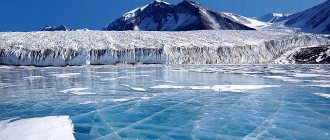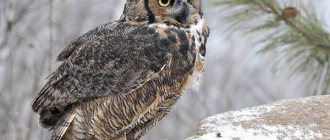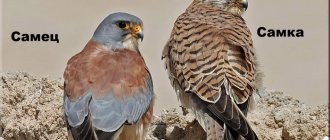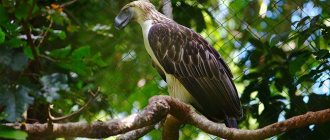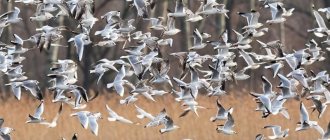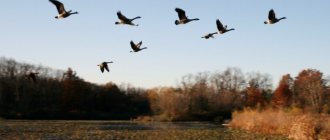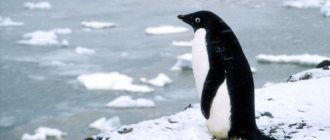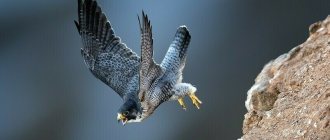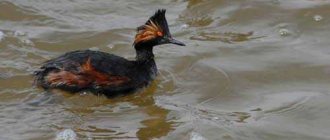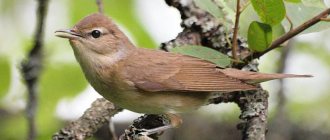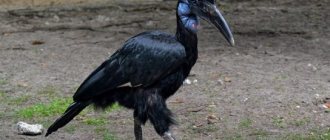Wikipedia list article
Adelie penguins in Antarctica
This is a list of bird species recorded in Antarctica
.
The avifauna of Antarctica includes a total of 61 species, of which 1 is endemic. This list's taxonomic treatment (designation and sequence of orders, families and species) and nomenclature (common and scientific names) conforms to the conventions of the Clements Checklist of Birds of the World
, 2022 Edition Family Accounts at the beginning of each heading reflect this taxonomy, as does the number of species in each family account.
Sandpipers and allies
order
: Charadriiformes
Family
: Scolopacidae
Scolopacidae is a large, diverse family of small to medium-sized shorebirds, including waders, curlews, smarties, drumsticks, babblers, woodcocks, snipe, dowwichers and phalaropes. Most of these species eat small invertebrates scavenged from the mud or soil. The different lengths of legs and beaks allow multiple species to feed in the same habitat, especially along the coast, without direct competition for food.
- Mountain sandpiper, Bartramia longicauda
(A)
Features of fauna
The fauna of Antarctica has its own ancient history. In the distant past, even dinosaurs lived on the mainland. But today there are not even insects due to strong cold winds.
Today Antarctica does not belong to any country in the world. The natural world is untouchable here! Animals here are not afraid of people, they are interested in them, because they did not know the danger from a person who only discovered this amazing world a couple of centuries ago.
Many animals of Antarctica are migratory; not all are able to survive in such a harsh environment. There are no land-based four-legged predators on the continent. Marine mammals, pinnipeds, huge birds - these are the animals of Antarctica. The video reflects how the lives of all inhabitants are connected to the ocean coast and water basins of the mainland.
Zooplankton, which is rich in the waters around the mainland, is the main food for many inhabitants from penguins, the indigenous inhabitants of Antarctica, to whales and seals.
Skuas and huntsmen
order
: Charadriiformes
Family
: Stercorariidae
South Pole Skua, Stercorarius maccormicki
Family Stercorariidae are generally medium to large sized birds, usually with gray or brown plumage, often with white wing markings. They nest on the ground in temperate and arctic regions and are long-distance migrants.
- Chilean skua, Stercorarius chilensis
- South polar skua, Stercorarius maccormicki
- Brown skua, Stercorarius antarctica
- Pomarine jaeger, Stercorarius pomarinus
(A) - Parasitic huntsman, Stercorarius parasiticus
(A) - Long-tailed Jaeger, Stercorarius longicaudus
(A)
Geography of Antarctica
Antarctica is the southernmost continent on the planet. Geographically, the South Pole is located in Antarctica. The continent is surrounded by the Southern Ocean. Antarctica has an area of 14,200,000 square kilometers , which is twice the size of Australia.
98% of Antarctica's landmass is covered in ice, which in some places is up to 4.7 kilometers thick, so the crust covers almost all but the northernmost regions. The icy deserts of Antarctica are characterized by extremely low temperatures, intense solar radiation and incredible dryness.
Almost all precipitation falls in the form of snow and is limited to only a small area, approximately 300 kilometers from the coast.
Some regions may receive as little as 50mm of rain per year. Interesting fact : Antarctica is the least densely populated continent on Earth: only 0.00008 people per square kilometer.
The lowest temperature ever recorded on Earth was recorded in Antarctica at the Vostok Antarctic station, located on the Polar Plateau - -89.4°C. Even in such harsh conditions there is life, but it is only possible for extremophiles.
Antarctica - geography
The temperature in the Southern Ocean does not change much throughout the year - it is constantly within 1-2°C. In summer, ice covers 4,000,000 square kilometers of ocean. The continental shelf of Antarctica extends 60 kilometers long and 240 kilometers wide. The depth in these areas averages 500 meters. The bottom is a mixture of sand, mud and gravel.
The climate of the main part of Antarctica is very dry, but the western part of the continent and the sub-Antarctic islands are more suitable for life, so this is where the fauna blooms and develops. These areas can receive up to 900 mm of precipitation annually - it also sometimes rains there. The Northern Peninsula is the only place in Antarctica where summer temperatures can rise above 0°C. It is the humidity and temperature that make the subantarctic islands home to a wide variety of unique animals.
Gulls, terns and skimmers
order
: Charadriiformes
Family
: Laridae
Seagull, Larus dominicanis
Antarctic tern,
Sterna vittata
Laridae are a medium to large family. seabirds, such as gulls, terns, and skimmers. Gulls are usually gray or white, often with black markings on the head or wings. They have thick, long beaks and webbed feet. Terns are a group of medium to large sized seabirds, usually with gray or white plumage, often with black markings on their heads. Most terns hunt fish by diving, but some collect insects from the surface of fresh water. Terns tend to be long-lived birds, with some species known to live longer than 30 years.
- Sabina's Seagull, Xema Sabini
(A) - Franklin's gull, Leucophaeus pipixcan
(A) - Seagull seaweed, Larus dominicanis
- Arctic tern, Sterna paradisaea
- Antarctic tern, Sterna vittata
Animal world of Antarctica
ALBATROSS FAMILY
Albatrosses are huge seabirds with short, strong necks and long, narrow wings. They can soar over the vast expanses of the ocean, moving thousands of kilometers from the coast without flapping their wings. When there is calm, when there is no lifting force necessary for soaring, albatrosses float on the surface of the water until a gust of wind helps them take off.
During their migrations, albatrosses can fly far to the north and are found all the way to the temperate zone of the Northern Hemisphere, but they never fly into the Arctic Ocean.
The largest albatrosses are the wandering and royal albatrosses. For example, in 1965, a wandering albatross with a wingspan of 3.63 m was caught in the Tasman Sea.
Albatrosses are inhabitants of the sea. They visit the shores only during the breeding season, and spend the rest of the time in the air, soaring alone over the ocean expanses.
The name “albatross” is a corruption of the Portuguese word “alcatraz” by English sailors, which the Portuguese used to designate all large seabirds. There are 21 species of albatross in total, but they are all similar to each other in many ways and lead approximately the same lifestyle. They all live in the Southern Hemisphere: from Antarctica to Australia, South Africa and South America. Some species occasionally visit the cold waters of the Southern Ocean, but none have ever nested in Antarctica.
Albatrosses spend most of their lives above the ocean and are brought to the mainland only by chance, by storms or hurricanes.
Albatrosses sleep on the surface of the ocean, and not in the air, as was once thought. Birds constantly roam in search of food. They feed on fish and squid, which are caught in the surface layers of water.
Albatrosses nest in colonies mainly in the Southern Hemisphere between the tropics and the Antarctic Circle, usually on high rocks and cliffs of deserted islands, where strong winds allow them to jump from a cliff and catch an updraft to take off. If the island is large enough, they prefer steep and rocky headlands with access to the sea in different directions. On all the islands on which albatrosses nest, land predators and people were initially absent.
Birds gather on the islands in early October and perform courtship games - they spread their tails, open their wings, click their beaks, performing some kind of intricate dance.
The nest is built from mud and grass. Females lay one egg. Incubation lasts 10 weeks.
The food fed to the chicks can range from fresh squid, fish and krill to the energy-rich light oil that the birds produce in their stomachs. Chicks require a long period of time to fledge before they fly. Even in small species of albatrosses this period takes 140-170 days, and in large ones it can reach 280 days. Like other seabirds, albatross chicks first gain more weight than their parents, and before their first flight, they use these reserves to develop the aerodynamic characteristics of the body, in particular, to grow their flight feathers. Ultimately, by the time they take their first flight, the chicks weigh about the same as their parents. Having fledged and made its first independent flight, the chick stops receiving help from its parents.
Albatrosses are the longest-lived birds: some individuals live up to 50 years.
Wandering Albatrosses
- one of the most tireless sea travelers. Their home is the islands in the ocean all the way from South Georgia to the Indian Ocean and the subantarctic belt of New Zealand.
In a day, they can fly up to 800 km, gliding in air currents. On windless or cold days they do not rise above 15 m above the water.
The span is up to 3.7 m. This is the largest wingspan of all flying birds, the body length is up to 1 m. In young albatrosses, the brown plumage fades over time and turns into white. Adult birds are snow-white, with the exception of black edges on the back of the wings; the beak and paws are pale pink, the eyes are usually dark brown.
Albatrosses feed on fish, mollusks and crustaceans, which are always abundant on the surface of the ocean.
It is a solitary bird, but when nesting time comes, albatrosses gather in large colonies (up to a thousand nests) on islands (South Georgia, Crozet and Kerguelen, Antipodes and Macquarie Islands).
An albatross can spend up to fifteen years searching for a mate. If a couple does not produce chicks for a long time, they “scatter”. But if a couple works out, the albatrosses stay together for life.
Galapagos albatrosses
Royal albatrosses.
Previously, the royal and wandering albatrosses were considered one species.
The royal albatross species is divided into 2 subspecies: the northern royal albatross and the southern royal albatross. In the first, the upper side of the wings is covered with dark brown feathers, in the second subspecies they are white.
The royal albatross reaches a body length of 1-1.2 m. The wingspan is 2.8-3.2 m, but it can be larger. Weight up to 8 kg.
Like all albatrosses, it uses air currents and can accelerate up to 100 km/h in strong winds - this helps it conserve energy for flight. Long wings are an ideal device for gliding flight.
The low fertility and long development of the royal albatross are compensated by the long life expectancy and low mortality of adult birds. According to statistics, only 3 out of 100 albatross die every year.
The royal albatross reaches sexual maturity at 6–10 years of age. Lays one egg. Egg incubation lasts 80 days. Feeding the chick lasts 34-38 days. Breeds on Chatham, Campbell and Auckland Islands in the South Pacific, as well as southern New Zealand.
Average life expectancy - 50 years
Antipodean albatrosses
- a subspecies of the wandering albatross - endemic to New Zealand. The breeding range is limited to islands near New Zealand. The plumage is brown, the head and neck, chest and belly are white. They nest on the slopes of mountain ranges, building nests in places with vegetation, or in fields among hummocks.
Albatrosses fly across the Southern Ocean from Australia to Chile.
The number of adult individuals decreases every year, which leads to the extinction of the species.
Tristan albatrosses
are a subspecies of the wandering albatross. They are difficult to distinguish, but the Tristan one is darker and smaller. Body length up to 100 cm, wingspan exceeds 3 m.
The albatross's diet consists of fish, squid and crustaceans.
The range of Tristan albatrosses is limited to the Tristan da Cunha archipelago. Ironically, albatrosses began nesting on Gough Island precisely because there were no mammalian predators on the island before the industrialists arrived there. Albatrosses nested at altitudes of 400-700 m above sea level and on the slopes of coastal cliffs. After the breeding season, Tristan albatrosses dispersed over the South Atlantic.
On neighboring Inaccessible Island the species has virtually disappeared, and on Gough Island the population has declined by 28% over the past 50 years to between 1,500 and 2,400 pairs.
Replenishment of the population is slow - females lay one egg every 2 years.
Galapagos albatrosses
- the only species of the albatross family that lives in the tropical zone at the latitude of the equator. It nests and feeds off the Pacific coast of South America on the island of Hispaniola on the volcanic landscape of the Galapagos archipelago among boulders and sparse vegetation.
The albatrosses' diet consists of fish, cephalopods and crustaceans. During the incubation period, the search for food is carried out in Peruvian reservoirs, and in the post-breeding period - in the east and southeast in reservoirs of the Ecuadorian and Peruvian shelf.
Every year at the end of March, birds nest in the southeast of the island of Hispaniola on volcanic soil among rocks covered with sparse vegetation and dense bushes.
From late December to early January, the chicks become independent and reach sexual maturity after 4-6 years. The Galapagos albatross reaches a length of 90 cm and weighs up to 2 kg, the wingspan is 2.3-2.0 m. The head is painted predominantly white, the crown and back of the head are yellowish. The chin, throat and chest are white with a gray worm-like pattern, primarily on the sides of the chest and body. The belly is chocolate brown. The upper part of the body is chestnut color. The wings on the upper side are chocolate brown without a pattern. The undersides of the wings are dark at the edges and white in the center. The large beak is yellowish, the eyes are dark brown. Paws are pale blue.
Tristan albatross
The population on Plata Island is under threat due to predators (rats and cats) destroying nests, as well as illegal collection of eggs and chicks.
Black-browed albatrosses
- the most numerous species of albatross. They nest on the islands of the Southern Hemisphere: South Georgia, the Tristan da Cunha archipelago, and the Auckland Islands.
The black-browed albatross gets its name from the black feathers around its eyes. Body length - from 80 to 95 cm. Wingspan - up to 2.4 m, weight up to 4 kg.
Usually black-browed albatrosses are solitary, but during the nesting period they create colonies of thousands of people. They lay one egg once a year. Hatching lasts about two months, feeding the chick - up to six.
The black-browed albatross usually looks for prey while hovering 15-20 m above the water. It feeds on fish, octopuses, squids, and crustaceans. The albatross appears above the water before a storm, as the raging waves throw a lot of food onto the water surface.
Campbell's albatrosses
These are black and white albatrosses of medium size, length up to 80 cm, weight up to 3 kg. They are sometimes considered a subspecies of the black-browed albatross.
They live in the southern hemisphere from Antarctica in the south to Australia, and in the north - in the South Pacific Ocean.
The black triangles around the eyes reach down to the yellow beak, with an orange tip.
They begin to reproduce at 10 years of age. They nest on rocky ledges and slopes covered with grass or mud on Campbell Island and the small island of Jeannette Marie, (New Zealand) in the South Pacific Ocean.
A wandering albatross performs a mating song to a female.
They lay eggs in early August.
The albatross feeds on fish, squid, and crustaceans.
The average lifespan of an albatross is 30 years.
Chatham albatrosses.
The rarest species of albatross are the Amsterdam, Chatham and White-backed albatrosses (
the latter was declared extinct in 1949
).
The wingspan is up to 2.2 m, the total length is about 1 m, and the weight is from 3 to 5 kg. The head is dark gray, the underside of the body and wings are white. The beak is bright yellow. It feeds on fish and cephalopods.
They nest in colonies exclusively on one of the subantarctic islands of New Zealand - Pyramid Island, part of the Chatham Archipelago. The clutch contains one white egg with red-brown speckles. The incubation period lasts 60-70 days.
Now the population of these birds has decreased significantly - it is estimated at 11 thousand.
Female black-browed albatross with chick
Albatrosses of Selwyn
are medium-sized black and white albatrosses. Differs from the Chatham albatross by having a gray head, wider wings and a black stripe along the edge of the lower surface of the wing. Habitat: Atlantic Ocean. Wingspan - 2.6 m, weight up to 4 kg. Length - 90 cm. They feed on fish, squid, and crustaceans. They fly from South Africa to Australia and to the east coast of South America.
Selvin's albatrosses nest on the rocky islands of the Crozet and Chatham archipelagos in the Southern Ocean and on the islands of New Zealand.
There is one egg in the nest. Incubated by both parents from September to early November. The chicks fledge after 4 months.
Grey-headed albatrosses
received their name for the ash-gray coloring of the head and neck. They nest in large colonies on islands in the Southern Ocean. The largest breeding colony is on South Georgia Island. Smaller colonies are on the Kerguelen, Crozet, Prince Edward Islands in the Indian Ocean, Campbell and Macquarie Islands south of New Zealand, as well as on a number of islands off the coast of Chile. While feeding their chicks, albatrosses fly south to the Antarctic region in search of prey. Young or non-nursing individuals migrate throughout the Southern Ocean, flying as far north as 35º S.
The length of the gray-headed albatross is 80 cm. The upper sides of the wings, chest, back and tail are almost black, the lower sides of the wings are white, and behind each eye there is a white semicircle. The beak is black. The undersides of the wings are white with a wide black stripe along the leading edge.
They build large nests of grass on steep slopes or rocks. There is one egg, incubation lasts up to 70 days. Research conducted on Bird Island (off the coast of South Georgia) showed that parents bring the chick an average of 620 grams of food every 1.2 days, the maximum weight of the chick reaches up to 5 kg. The chicks fledge 140 days after hatching. Before they fledge, the chicks lose weight. They leave the colony and return only after 6-7 years. After his return to his home island, the young albatross begins to start a family.
Grey-headed albatrosses spend a lot of time in the open ocean rather than on islands. In the open ocean, they hunt mainly for squid and other cephalopods, fish, crustaceans, etc. Krill takes last place in the diet - because there is less krill in the open sea than near the shore. Grey-headed albatrosses can dive for prey to depths of up to 7 meters, but do so very rarely.
Grey-headed albatross numbers are declining. The population on Bird Island (South Georgia) has declined by 20-30% over the past 30 years. In general, the number of this species over the past 90 years (3 generations) has decreased by 30-40%.
Atlantic Yellow-billed Albatrosses
nest on the islands of Tristan da Cunha (Inaccessible Island, Middle Island, Nightingale Island and Stoltenhoff Island), as well as on Gough Island.
During long flights over the South Atlantic Ocean, they travel from Africa to South America, between 15 and 45 degrees south latitude.
The yellow-billed albatross differs from other albatrosses in its smaller size (in particular, narrower wings) and a narrow black stripe along the edge of the lower surface of the wing. The grey-headed albatross has the same gray head, but the black stripe on the lower surfaces of its wings is wider and more diffuse.
Length - 81 cm. Albatross with black and white coloring, only the head is gray and there are gray “glasses” around the eyes; the back of the head and back of the neck are white. The beak is black, with a yellow stripe along the upper edge and a pink tip. The middle of the back is gray with a black tint, the tail and upper sides of the wings are the same color; the lower surfaces of the wings are mostly white. Along the edge of the lower surface of the wing and the main flight feathers there is a narrow black stripe.
It feeds on squid, fish and crustaceans.
Like all albatrosses, the yellow-billed albatross lives in colonies - building a nest of mud, peat, feathers and grass. Reproduction occurs annually.
The habitat of this species is 16,800,000 km², the nesting area is 80 km². The population on the islands is:
on the islands of Tristan da Cunha - from 16,000 to 30,000 pairs;
on Gough Island - 5300 breeding pairs;
on Nightingale Island - 4,500 pairs;
on the Middle Island - from 100 to 200 pairs;
on Inaccessible Island - 1100 pairs.
Buller's Albatrosses
breed on Chatham and Snares Islands, as well as on the Solander Islands. However, isolated individuals have been observed in the eastern Pacific Ocean off the coast of Chile.
Buller's albatross reaches a length of 76 to 80 cm, a wingspan of up to 213 cm, and a weight of 2 - 3 kg.
The albatross has white plumage, the head and neck are light gray, the back between the wings and the wing coverts are dark. The upper side of the tail is also dark, the underside is white. The beak is brown with long yellow stripes on the beak and undermandible. The legs are bluish-white.
The head of young birds is gray. Only in three-year-old birds the beak changes its color, taking on the color of adult birds.
The Buller's albatross feeds primarily on cephalopods, as well as fish and krill. It obtains food more often from the surface of the ocean. Very often they follow ships.
Buller's albatrosses nest each year from late December to mid-January. They build their nests in dense vegetation on hills and cliffs towards the sea. Sometimes nests are also located in more open terrain between rocks. The nest is made of earth and grass. Buller's albatrosses are very attached to old nesting sites.
There is one egg in the clutch, white with brownish-red spots. The nesting period lasts on average 60 days. A young bird becomes independent after an average of 160 days. Both parent birds participate in incubating and feeding the chick.
There is a possibility of confusing Buller's albatross with the grey-headed albatross.
Dark-backed Sooty Albatrosses
They live in the south of the Atlantic and Indian oceans. Most birds nest on the islands of Tristan da Cunha, Gough and Prince Edward. Small colonies also nest on the islands of Crozet, Kerguelen, Amsterdam and Saint-Paul.
Reaches a length of 80 to 90 cm. Wingspan up to 2 m. Weight up to 3 kg. Females are usually lighter than males. They have a smaller beak, slimmer legs, a shorter tail and shorter wings.
The plumage of mature birds has an almost uniform color - from dark chocolate to grayish. The color of the head in many individuals is much darker than the back of the head, belly and wings. Birds have a prominent white eye ring. Legs and paws are light pink to bluish-gray. The mandible along the edge of the beak is lighter, forming a whitish stripe.
Outside the breeding season, the dark-mantled clouded albatross stays south of 30° south latitude. Sometimes birds mistakenly fly into New Zealand east of their normal range.
The dark-mantled clouded albatross breeds every second year. The nesting period begins in October. They nest in colonies on overgrown and sheltered cliffs. The nest is built on the ground from plants and lined with grass. There is one egg in the clutch. The incubation period is from 65 to 75 days. Young birds become independent after 145-170 days. Both parent birds participate in the construction of nests, incubation of the clutch and feeding of the chick.
Dark-backed Sooty Albatross
Light-backed sooty albatrosses
- the most beautiful of the entire family of albatrosses, the only ones among their relatives who often fly beyond the boundaries of the ice belt from their nesting grounds on the subantarctic islands.
These birds are found on the islands of the Southern Ocean - the Antipodes, South Georgia, Crozet, Kerguelen, Macquarie and others.
The plumage of the head, throat, wings and tail is dark brown, the rest of the body is gray, the lower parts are brownish-gray. Young birds have a brown neck and back, instead of white, gray circles around the eyes and a grayish-yellow stripe around the beak. Beak 100 mm long, black. Length up to 80 cm. Bird weight from 2.5 to 3.7 kg. The wingspan is from 1.8 to 2.2 m.
Light-mantled Sooty Albatross
The diet is based on cephalopods and krill, as well as other crustaceans and fish.
Penguins
Emperor penguin, Aptenodytes forsteri
order
: Sphenisciformes
Family
: Spheniscidae
Penguins are a group of aquatic flightless birds found almost exclusively in the Southern Hemisphere. Most penguins feed on krill, fish, squid and other types of sea life caught while swimming underwater.
- King penguin, Aptenodytes patagonicus
- Emperor penguin, Aptenodytes forsteri
- Adelie penguin, Pygoscelis adeliae
- Gentoo penguin, Pygoscelis papua
- Chinstrap penguin, Pygoscelis antarctica
- Magellanic penguin, Spheniscus magellanicus
(A) - Spaghetti penguin, Eudyptes chrysolophus
- King penguin, Eudyptes schlegeli
(A) - Southern rockhopper penguin, Eudyptes chrysocome
killer whale
Also known as killer whales, these animals are one of the most widespread species in Antarctica.
Found in oceans around the world, these whales are uniquely suited to the icy Antarctic waters and have a layer of blubber that helps them maintain their body heat while diving to depths of over 100m.
These beautiful animals can swim at speeds of up to 50 km per hour thanks to their hydrodynamic shape, dorsal and pectoral fins. Echolocation allows them to communicate with each other and find food.
Albatrosses
Wandering albatross, Diomedea exulans
order
: Procellariiformes
Family
: Diomedeidae
Albatrosses are one of the largest flying birds, and the great albatrosses are from this genus Diomedea
have the largest wingspan of any existing bird.
- Grey-headed albatross, Thalassarche Chrysostoma
- White-capped albatross, Thalassarche cauta
(A) - Salvin's albatross, Thalassarche salvini
(A) - Black-browed albatross, Thalassarche melanophris
- Sooty albatross, Phoebetria fusca
- Frivolous albatross, Phoebetria palpebrata
- Royal albatross, Diomedea epomophora
- Wandering albatross, Diomedea exulans
Test on the topic
- /10
Question 1 of 10The largest mammal on the planet is:
Start test
Hall of Fame
To get here, take the test.
- Alexey Golovanov
10/10
- Anton Bilym
10/10
- Olga Galimova
9/10
- Nastya Tenigina
9/10
- Denis Khristoforov
10/10
Southern storm petrels
Wilson's petrel, Oceanites oceanicus
order
: Procellariiformes
Family
: Oceanitidae
Southern petrels are relatives of petrels and the smallest seabirds. They feed on planktonic crustaceans and small fish caught from the surface, usually while hovering. The flight flutters and sometimes the bat is in love.
- Wilson's petrel, Oceanites oceanicus
- Gray petrel, Garrodia nereis
- Black-bellied petrel, Fregetta tropica
Weddell seal
Weddell seals have smooth bodies covered with a thick layer of fat, which allows them to dive to depths of up to 600 m and remain underwater for up to 45 minutes.
After birth, the little seals enjoy milk with a fat content of 60% - one of the highest levels among mammals - allowing them to develop quickly before winter sets in.
Don't miss: What kind of wood is best for a stove or fireplace?
Petrels and petrels
order
: Procellariiformes
Family
: Procellariidae
Prollariids are a major group of medium-sized "true petrels" characterized by united nostrils with a median septum and a long external functional primary.
- Southern giant petrel, Macronectes giganteus
- Northern giant petrel, Macronectes halli
- Southern Gulmar, Fulmarus glacialoides
- Antarctic petrel, Thalassoica antarctica
- Cape Petrel, Heading Daption
- Snow petrel, Pagodroma nivea
- Kerguelen petrel, Aphrodroma brevirostris
Broad-billed prion, Pachyptila vittata
- Soft-plumed petrel, Pterodroma mollis
- White-headed petrel, Pterodroma lesson
- Spotted petrel, Pterodroma unepectata
- Atlantic petrel, Pterodroma incerta
- Blue petrel, Halobaena caerulea
- Fairytale prion, Pahiptila turtur
- Broad-billed prion, Pachyptila vittata
- Prion Salvina, Pachyptila salvini
- Antarctic prion, Pachyptila desolata
- Slender-billed prion, Pachyptila belcheri
- Gray petrel, Procellaria cinerea
- White-throated petrel, Procellaria aequinoctialis
- Great petrel, Ardennes gravis
(A) - Sooty petrel, Ardenna grisea
- Short-tailed shearwater, Ardenna tenuirostris
- South Georgia diving petrel, Pelecanoides georgicus
Ptarmigan
This small, well-fed bird lives in the mountainous areas of the coastal regions of the planet's Arctic Circle. This unique northern resident does not leave her habitat even in winter. Snow-white winter plumage helps to hide from predators against the backdrop of endless snow.
In summer, partridges acquire a protective mottled brown coloration. Partridge eggs have the same color. Ptarmigans feed on berries, seeds and leaves of local plants in summer, and seeds and tree buds in winter. For most of the winter polar day, birds hide under the snow.
3
Cormorants and Cormorants
Antarctic cormorant, Phalacrocorax bransfieldensis
order
: Suliformes
Family
: Phalacrocoracidae
Phalacrocoracidae are a family of medium to large fish-eating coastal seabirds, including cormorants and cormorants. Plumage color varies, most have mostly dark plumage, some species are black and white, and some are colorful.
- South Georgia shag, Phalacrocorax georgianus
- Antarctic cormorant, Phalacrocorax bransfieldensis
- Crozet shag, Phalacrocorax melanogenis
Why is an ostrich a bird?
All sources of information, including encyclopedic and scientific ones, indicate that the ostrich
- this is
a bird
.
... The first and most important argument is that an ostrich
has feathers, not wool, which means it is feathered. He has, although not the largest and strongest, wings. So what if he doesn’t fly and doesn’t use them, but they exist.
Interesting materials:
Do I need to enable synchronization on my smartphone? Do I need to enable synchronization? Do I need to dig up cloves for the winter? Is it necessary to dig up muscari for the winter? Do Broilers need to turn off the lights at night? Is it necessary to steam feed for rabbits? Do you need to charge your smartphone to 100 percent? Do you need a protective glass on Redmi 7? What is a telephoto lens? Cladding the facade of a house, which material is better?
Bunochka
This is a popular fairy-tale character among all northern peoples. The small, sparrow-like northern bunting, Bunting, lives on the rocky beaches of lakes and rivers in the Arctic tundra. Its second name is Snow Plantain.
Arctic researchers noted her arrival on an ice floe near the North Pole. It can be found in Alaska, Greenland, and the north of the Eurasian continent. It has a very beautiful delicate plumage that changes from winter to summer. In summer it is darker, in winter it becomes lighter, the head becomes brown, and the beak becomes orange. This makes it less noticeable in thawed areas with brown grass.
Males tolerate arctic frosts well and can stay at home for the winter; females return from wintering a month later than males.
9
White or Polar Owl
Our list ends with the largest owl among all tundra owls. It has impeccable snow-white plumage interspersed with small dark spots. Lives on the islands of the Arctic Ocean closest to the mainland, in the tundra of Eurasia and North America.
It builds nests with the first rays of the Arctic sun - in March or April. Hunts at night for small rodents (lemmings), small birds, hares, and does not disdain carrion and fish. It flies to its wintering grounds in the fall and spends the winter near its main habitat. The white owl has a large round head and bright yellow round eyes. The female is larger than the male, her wingspan can reach up to 160 cm.
11
